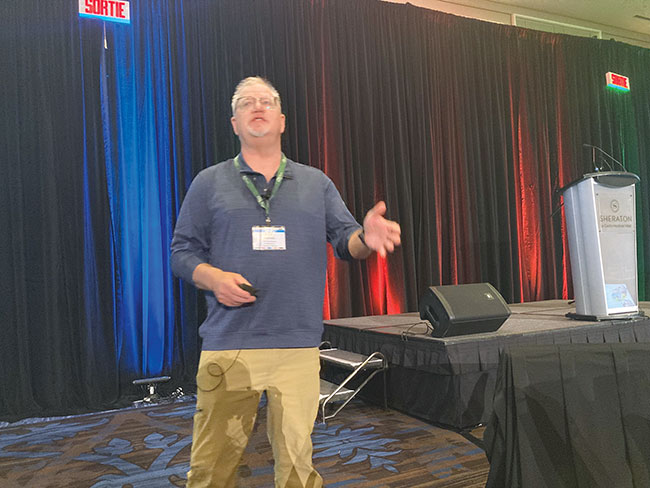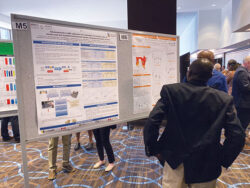
Features
Animal Health
New perspectives, new opportunities
August 30, 2023
By
Bree Rody
The Trough visits ANCC 2023.
 Wisconsin’s Patrick Hoffman speaks on the role of dietary phosphorus in milk fever prevention.
Wisconsin’s Patrick Hoffman speaks on the role of dietary phosphorus in milk fever prevention. This May, the Animal Nutrition Association of Canada (ANAC) held its second in-person Animal Nutrition Conference of Canada (ANCC) since the beginning of COVID-19. Held in Montreal, the conference brought together a delegation of just over 300 attendees including students, researchers and industry
The conference provided a balance of education and networking, with presentations from two dozen speakers. Although Canadian in focus, speakers came from across North America, including opening speaker Patrick Hoffman (University of Wisconsin-Madison), who spoke on the role of dietary phosphorus in hypocalcemia and milk fever prevention, and Dr. Robin White (Virginia Tech), who spoke on nutritional opportunities to evaluate the socioeconomic values of livestock through decoupling greenhouse gas emissions.
University of Saskatchewan’s Miranda Buchinski, ANAC’s graduate scholarship recipient, presented her research and findings on the impact of dietary nitrogen content and source on essential amino acid utilization and growth performance in growing pigs. “[Low-protein diets] have essentially become the standard in order to reduce diet cost,” Buchinski explains to The Trough. “When you over-feed protein, it tends to waste intro excess nitrogen standpoint, which from an environmental standpoint [is concerning].” Her research looked at the back fat and lean depth and the ideal carcass composition. “If the pigs are way too fat, then [the producer] is going to get docked on that in the abattoir.”

Attendees view and assess graduate student research at ANCC’s poster session.
Some speakers brought nuance to social trends – like White, who delivered her talk on decoupling greenhouse gas emissions from livestock operatoins. While the animal agriculture industry is often pointed to as an objective, significant and (in the eyes of activists) unnecessary source of greenhouse gas emissions, White offered a different perspective.
“Shifts in demand for meat in particular don’t always convey the expected outcomes in our food production systems,” White told the crowd. “For example, a 10 per cent increase in demand of plant-based meat alternatives results in only a 0.15 per cent reduction in cattle supplies, but a substantial reduction in producer welfare… Producers end up going to international trade as an outlet for the products they’re producing. We don’t get the environmental benefit unless we see changes in production.”
Speaking with The Trough,White elaborated: “Quality management can have a lot of benefits, but if we manage in a way that is not efficiently utilizing resources, there can be a lot of challenges. Even our dieticians get confused on how to get information from different life-cycle assessments, different meta-analyses, so we need to provide more support in our scientific literature on how to contextualize information.”
Welfare goes hand-in-hand with nutrition. Iowa State University’s Dr. Stephanie Hanson discussed resiliency in feedlot cattle who endure stress during travel. With cattle often sitting on trucks anywhere from six to 24 hours at a time, injectable vitamin C, as well as zinc, which carry price tags of only about $1 per cow, could make a significant difference. “A lot of our cattle in the U.S. would be on a truck for [16 to 24 hours]… If some only came from two hours away, they might not require that investment.” An injectable supplement allows a more strategic approach. Additionally, both vitamin C and zinc added quality benefits to the beef.
The goal, says Hanson, is quicker recovery. “Every [cow] is likely to be trucked at some point.The less stress, the fewer days they have to be in the feedlot, the fewer resources they require.”
ANCC 2024 will take place in Winnipeg.
Print this page